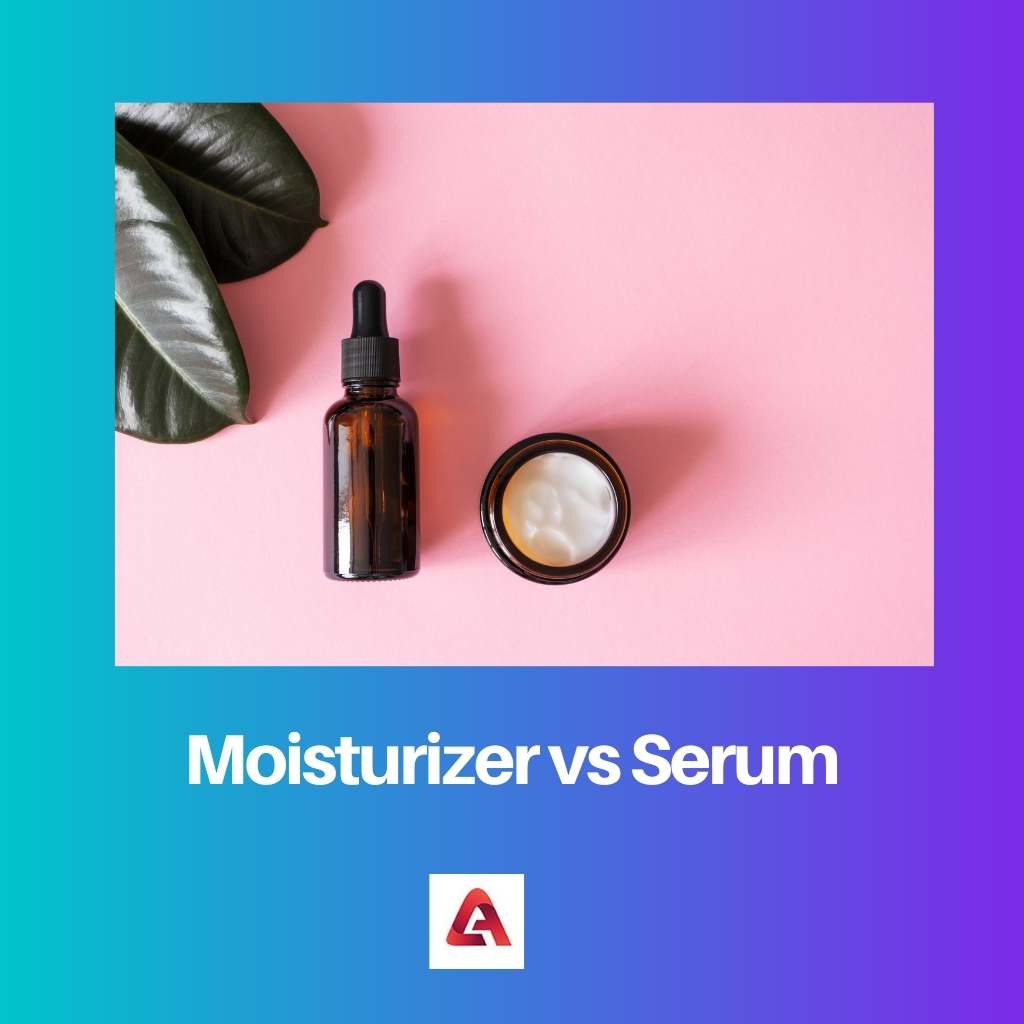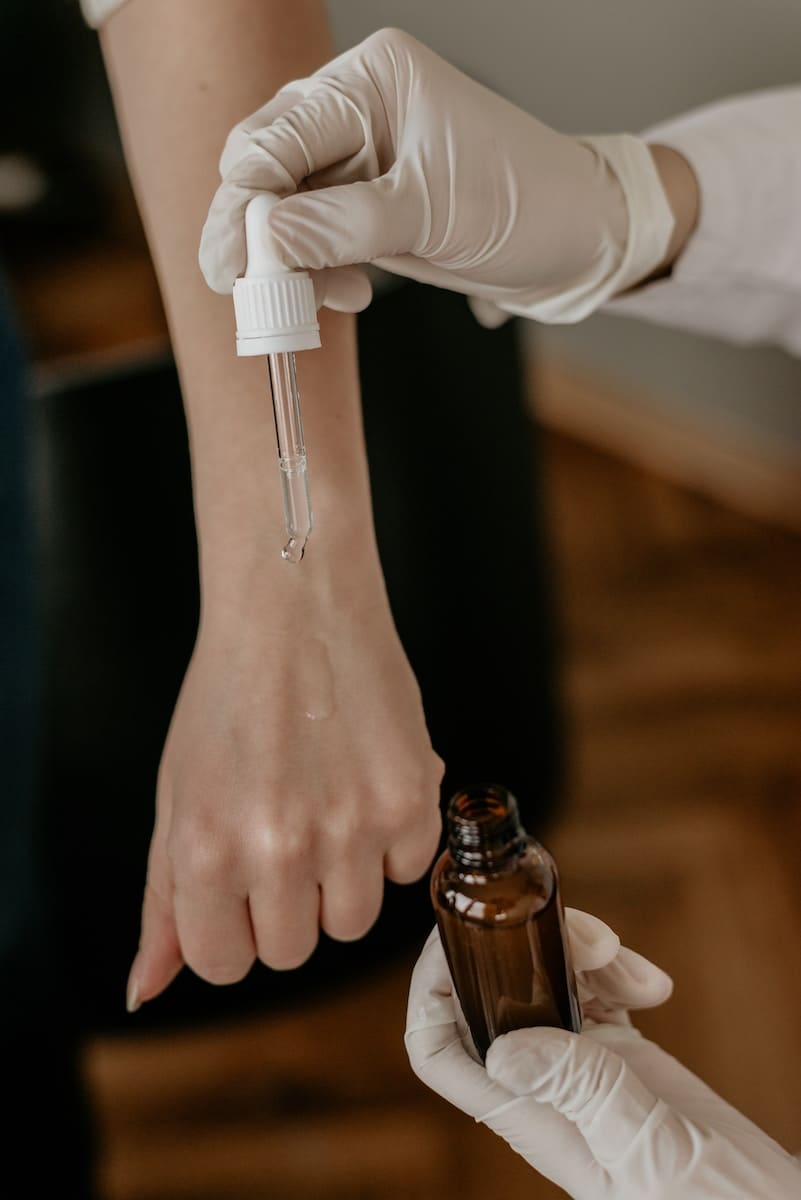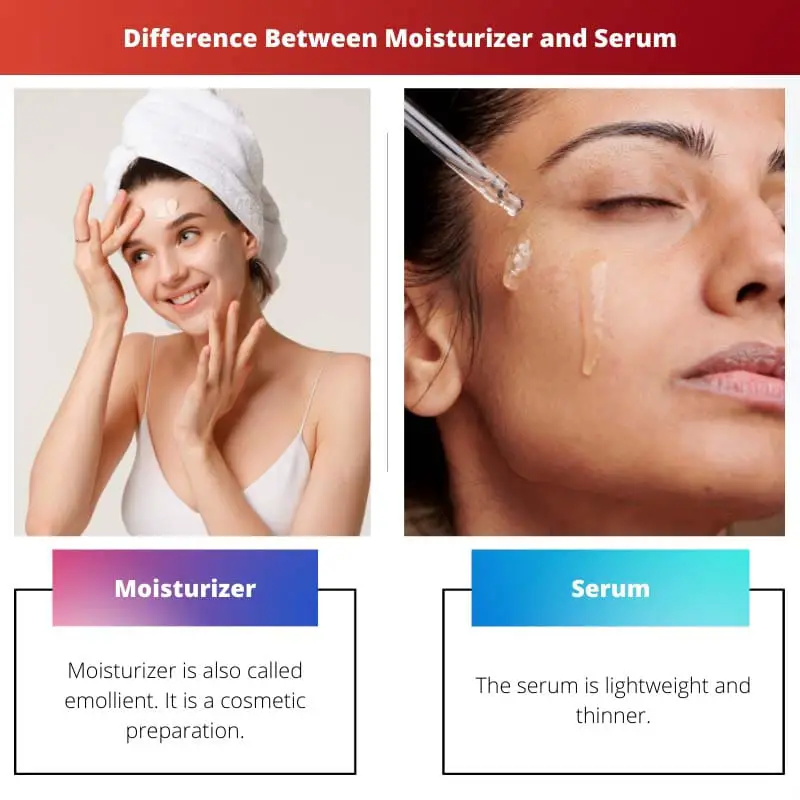Moisturizers and serums are two distinct things used to apply in the human body to the nourishment of the skin. They have different properties and characteristics based on the production and raw material used.
The level of concentration will reflect things on the skin.
Key Takeaways
- Moisturizer is a cream or lotion applied to the skin to prevent dryness and improve its texture, while serum is a lightweight, fast-absorbing liquid used to deliver active ingredients to the skin.
- Moisturizer is designed to hydrate the skin and create a barrier to prevent moisture loss, while serum delivers active ingredients such as antioxidants, vitamins, and peptides to the skin.
- Moisturizer is applied after cleansing and toning, while serum is applied before moisturizer to allow for better absorption of active ingredients.
Moisturizer vs Serum
A moisturizer is a thick skin-care product that takes time to absorb into the skin due to its large molecules. Moisturizer brings hydration to the layers of the skin. A serum is a skin-care product that gets easily absorbed into the skin due to its small molecules. It has active ingredients that are used to treat specialized skincare issues.

Moisturizer is also called emollient. It is a cosmetic preparation. The primary usage of moisturizer is to hydrate the skin. Sebum will work behind the moisturizer, which lubricates the skin.
Sebum is the gland secreted by healthy skin. The word emollient is taken from the Latin word mollire. The word emollient means to soften.
Thousands of brands are available nowadays. Moisturizer is an essential cream to maintain healthy skin. It is advised to use moisturizer for your skin for its protection.
The serum is lightweight and thinner. When compare to moisturizer, serums are less thicker and has a gel-like consistency. The serum has highly active ingredients.
The serum can be applied directly to your skin without any mixture. Before toning, the serum is applied. Sometimes serum is in liquid form.
The serum is expensive for its active ingredients. The primary usage of serum is to nourish the skin and protect it from exposure. It is also used as a treatment for dark spots, acne and anti-aging.
Comparison Table
| Parameters of comparison | Moisturizer | Serum |
|---|---|---|
| Active ingredients | The moisturizer has less active ingredients | The serum has more active ingredients |
| Function | Moisturizer will hydrate skin | The serum will nourish the skin |
| Appearance | Moisturizer is thicker | Serum is thinner |
| Consistency | The moisturizer has a creamy consistency | The serum has a gel consistency |
| Penetration | Moisturizer penetrates deeply | Serum may not penetrate deeply |
What is Moisturizer?
Moisturizers will help to maintain the water content of the human body. Water will evaporate, and dehydration happens in the skin. The moisturizer will prevent dehydration and keep its moisture.
The continuous dehydration of the skin will cause transepidermal water loss. But moisturizer will maintain the wet content and acts as a barrier. Moisturizer will prevent the skin from exposing to dust or damage.
The active ingredients present in the moisturizer will modify the water rate of the skin. The moisturizer has two varieties. They are occlusives and humectants.
Occlusive is a coating on the skin that keeps or maintains the skin’s moisture content. Humectants work in contrast to the occlusive. It absorbs water from the air and moisture the skin.
Both of them work effectively on the skin and keep your skin moisturized. Moisturizers will contain water to hydrate the skin. It is like a temporary hydrating agent for your skin.
The moisturizer is also used in the treatment of skin diseases. Diseases like psoriasis, xerosis, and pruritus can be treated with moisturizer.
Even sunscreens, hair tonics, and creams contain moisturizers. In disposal napkins, moisturizer is added to prevent skin irritation. Moisturizer is a better option to prevent skin exposure and skin diseases.

What is Serum?
The serum is lightweight. It never feels like you applied something to your skin. You can use serum along with moisturizer to prevent dehydration. The serums are transparent, and only drops are used.
The active ingredients of serum will directly react with your skin and smooth the skin. The serum is made of powerful ingredients. When compared to moisturizers, the serum has greater penetration power.
The small molecules will deeply penetrate into your skin and work effectively. The serum has a high concentration of active ingredients, which makes it expensive. You can see the changes in your skin in a shorter period.
Hydrating the skin, soothing the skin, and preventing aging is the primary function of the serum. You can apply the serum to your face twice a day.
After cleaning the face with fash wash, you can directly apply the serum to your face. Only a pea-sized amount is enough. Using the dropper, you can apply it to your face.
Many types of serums are available in the market. You need to choose the right one for your face. Depending on the problems, you need to choose the serum.
If you have a dark spot, you must choose the serum that cures dark spots. Likewise, you choose the serum. The glycolic acid serum is the common type of serum for normal skin.
The serum will help in the rejuvenation of the skin. The serum will reduce the open pores and puffiness.

Main Differences Between Moisturizer and Serum
- When compared to serum, the moisturizer will penetrate deeply.
- The moisturizer has a creamy consistency, whereas the serum has a light gel-type consistency.
- The moisturizer hydrates your skin, whereas the serum nourishes and promotes your skin.
- When compared to serum, the moisturizer has fewer active ingredients.
- When compared to serum, moisturizer is more thicker.

- https://www.ncbi.nlm.nih.gov/pmc/articles/pmc3050617/
- https://www.tandfonline.com/doi/abs/10.3109/09513591003632258





This article is a must-read for anyone who wants to delve deeper into skincare. It’s well-researched and provides valuable insights into the benefits and functions of moisturizers and serums.
Very informative article. It provided a clear understanding of the properties and characteristics of moisturizers and serums. I appreciated the detailed comparison table.
I appreciate the author’s focus on promoting awareness about skincare, particularly in distinguishing the specific functions of moisturizers and serums. This will encourage more people to be mindful of their skincare routine.
I found the explanation of humectants and occlusive in moisturizers to be very helpful. It’s great to know the science behind how they work effectively to maintain skin’s moisture.
The article itself is an eye-opener for people who are still unaware of the differences between moisturizers and serums. It definitely sheds light on the importance of maintaining skin health.
The distinction between moisturizers and serums was clearly defined in the article. It will be helpful for anyone wondering what the differences are and how they can benefit from both.